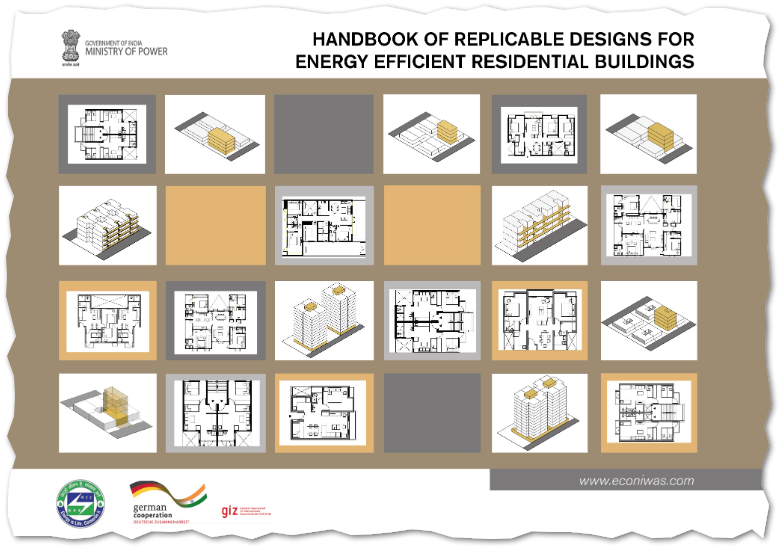While electrification will drive up electrical consumption, it will simultaneously lead to a vast decrease in overall energy demand. This is primarily because of the far greater efficiency of electric appliances and vehicles compared to their fossil fuel counterparts. If we can successfully make this nationwide shift, it has the potential to fix a lot of our energy-related issues, from …
Replicable design for energy-efficient homes in India

It’s interesting to see how other nations tackle energy efficiency in buildings. The Bureau of Energy Efficiency (BEE)’s Handbook of Replicable Designs for Energy Efficient Residential Buildings in India provides standardised and practical design templates aimed at reducing energy use in Indian homes. It does this by working through Passive House design strategies tuned for Indian climates. The notable difference …
Assessing feasibility of commercial PV generation

EECA recently published guidance for businesses weighing up commercial PV generation. As always, the devil lies in the detail, and understanding the methodology used to assess the viability of solar energy is important for businesses weighing up possible on-site PV generation. The report, Commercial-scale solar in New Zealand: Information for businesses considering investing in solar energy highlights several crucial considerations. …
Short stays in Passive House homes in Aotearoa New Zealand

I’ve been describing the features and benefits of Passive House buildings for years but even my best words can’t convey as much as directly experiencing it with all your senses. The international Passive House Open Days are a great chance to have a first look but an overnight stay would be a far more complete experience. What vast majority of …
Visiting The House, a giant NYC Passive House housing complex

There’s so much to see in New York City, including lots of certified Passive House buildings. Here’s another side trip I did during last year’s family holiday. The House is a 26-storey apartment building on Roosevelt Island, housing 352 rental apartments for Cornell Tech students, faculty and staff. It was the world’s largest certified Passive House building when it was …
Keep designPH up-to-date to avoid Passive House certification hitches
Passive House designers: do you know what version of designPH you are using? It’s important you are using, if not the latest version (2.2.24 at time of writing) then 2.1.15 or later. Otherwise your shading factors may not be accurate. We identified this issue last year and issued a brief advisory in our November email newsletter. Here’s the background explainer …
Owl Woods: complex form, superb Passive House performance

This Australian Passive House home is such a stunning departure from a simple rectangle and a great example of how complex forms can still be extremely energy efficient. It goes to show what energy modelling at design stage can achieve. Congratulations to all our Australian Passive House colleagues who brought this project to fruition back in 2019. The design didn’t …
Kara’s last tradies course

It was the end of an era last week, when Kara Rosemeier taught her last CET (certified Passive House tradesperson) in Auckland . Knowing Kara, hers will be a very active retirement and it’s a staged process. Kara will run one or more Certified Passive House Designer courses in 2025 before Sustainable Engineering assumes responsibility for all Passive House certification …
Passive House buildings still need heating

Here in New Zealand climates, people living in certified Passive House homes need to turn the heater on sometimes. To me as a building scientist and Passive House certifier, this is a blindingly obvious statement. But when a well-informed friend was grizzling about having to run heating in late May in their new Passive House, I had to think about …
